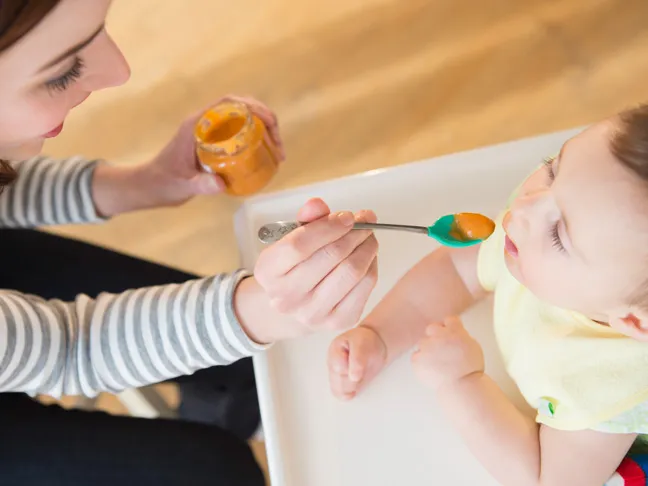The American Academy of Pediatrics recommends introducing babies to solids when they’re around 6-months-old (consult your pediatrician about the best feeding scheduled for your baby). In addition to age, there are other signs of readiness for solid foods, too, according to the AAP, including:
- Your baby can hold up her head.
- He’s sitting up on his own with minimal propping.
- She’s showing an interest in eating.
- He’s able to open his mouth to receive food.
- She’s able to turn her head away when finished eating.
- He’s able to clear a spoon of food.
- She no longer spits a spoonful of thin baby food right out of her mouth.
Once your baby shows these signs of readiness, Jill Castle, RD, and childhood nutrition expert, recommends offering him food once a day, to start, and at regular mealtimes to establish a routine. Castle suggests starting with iron-fortified cereals mixed with breast milk or formula, cooked and mashed sweet potato blended with breast milk or formula until very smooth and thin, and mashed avocado. Remember to introduce your baby to one new food at a time, two to three days apart, so that you can watch for any signs of a food allergy.
If your baby isn’t interested in solid food right away, don’t worry about it. “It can take several months for your baby to want to eat solid foods, and she may go through many phases of interest and disinterest,” says Carley Mendes, holistic nutritionist and author of Baby Knows Best, An Intro to First Foods. And it’s important to remember that these early eating experiences from the ages of 6 months to one year are more about exposure than anything else. “There’s no rush—breast milk or formula remains the primary source of nutrition until age 1,” she adds.
Photo: Getty








